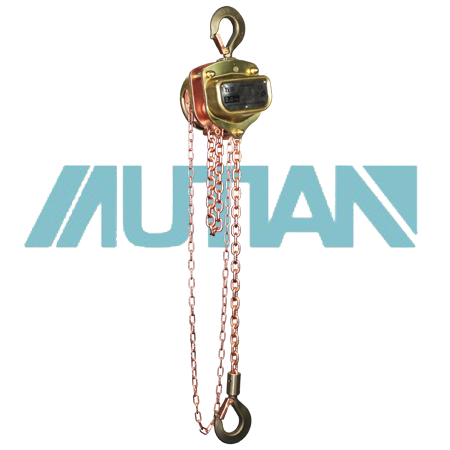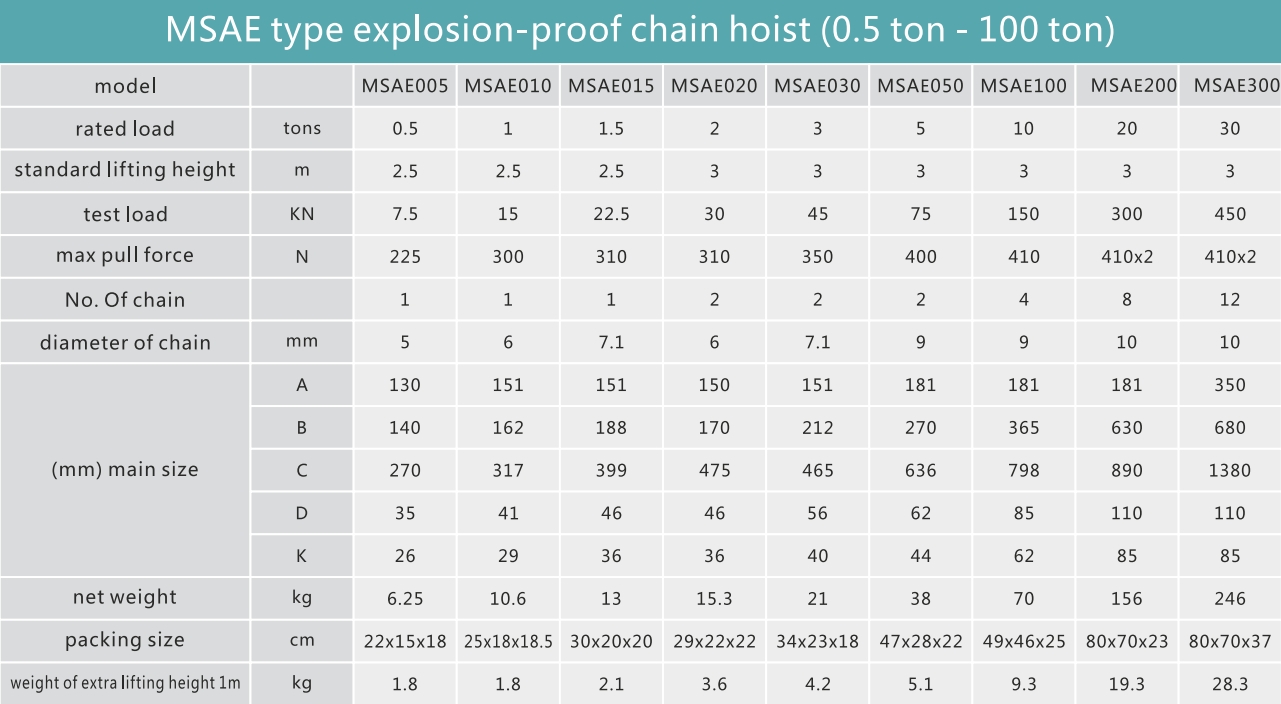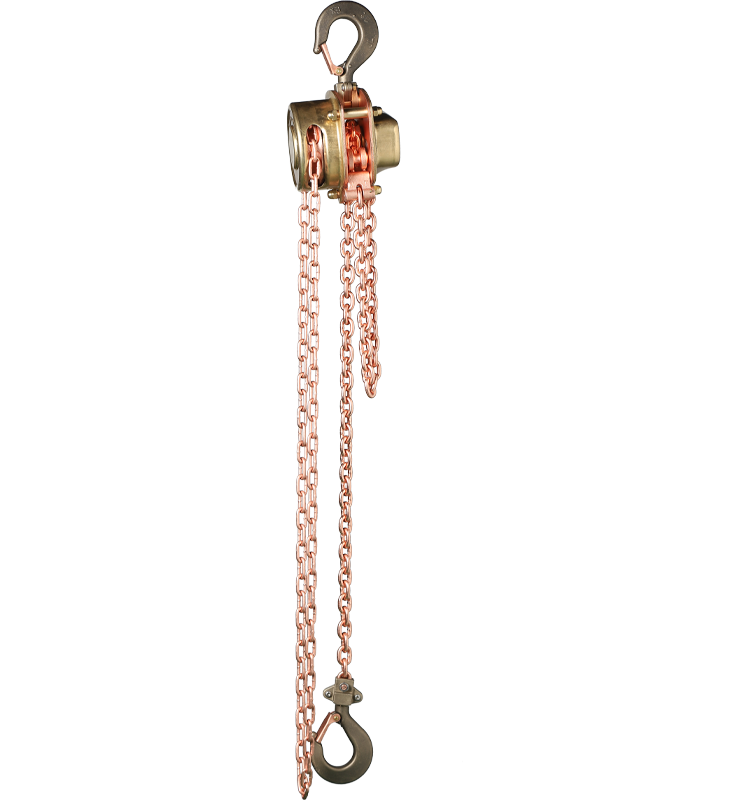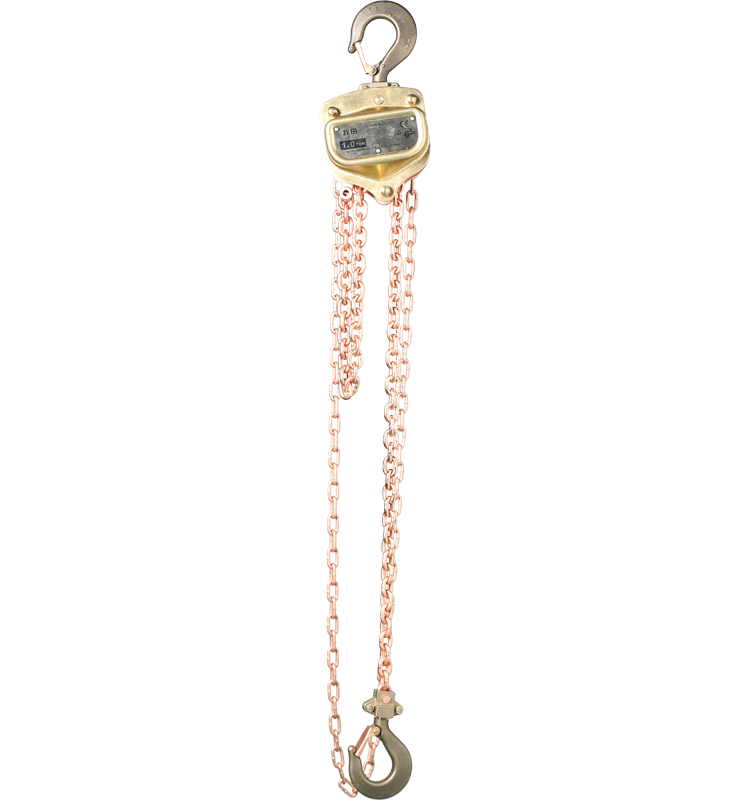 中文版
中文版



Welcome to contact us by phone:0086-0312-7969888
The internal structures and materials of explosion-proof hand chain hoists are designed to minimize the risk of sparking and ignition in environments where explosive atmospheres may be present. These hoists adhere to specific standards and certifications to ensure their safety in hazardous locations. While the exact design may vary among manufacturers and specific models, here are some common internal structures and materials found in explosion-proof hand chain hoists:
Internal Structures:
Load Chain:
The load chain is a critical component, and in explosion-proof hoists, it is often made from non-sparking materials such as bronze or stainless steel. The design includes links that reduce the risk of sparking during operation.
Hooks:
Load and suspension hooks are typically made from spark-resistant materials like bronze or other non-ferrous alloys. Some explosion-proof hoists may feature spark-resistant load hooks to further minimize the risk of ignition.
Gears and Transmission Components:
Gears and other transmission components within the hoist are often made from materials such as aluminum or non-ferrous alloys. These materials help prevent sparking during gear engagement.
Braking System:
The braking system is crucial for controlling the descent of the load and preventing unintentional movements. The materials used in the brake components are carefully selected to minimize friction and reduce the risk of sparking.
Housing and Enclosures:
The housing and enclosures of explosion-proof hand chain hoists are designed to contain any potential sparks or ignition sources. The materials used in the housing are often durable and corrosion-resistant, and they may include aluminum or stainless steel.
Seals and Gaskets:
Seals and gaskets are used to prevent the ingress of dust, moisture, or other contaminants into the internal components of the hoist. These components are designed to maintain the integrity of the enclosure and prevent sparking.
Control Mechanisms:
The control mechanisms, including levers or hand chains, are designed with materials that reduce the risk of sparking. Non-sparking materials and construction methods are employed to enhance safety.
Materials:
Aluminum:
Aluminum is lightweight, non-ferrous, and resistant to corrosion. It is commonly used in the construction of various components, including housing and covers.
Bronze:
Bronze is a non-sparking alloy often used in load chains, hooks, and other critical components. It offers good strength and resistance to sparking.
Stainless Steel:
Stainless steel is corrosion-resistant and may be used in load chains, hooks, or other components exposed to harsh environmental conditions.
Copper:
Copper is a non-ferrous metal with good electrical conductivity. It may be used in certain components of explosion-proof hoists.
Plastics and Non-Metallic Materials:
Plastics and non-metallic materials are used in various components, such as hand grips, covers, and seals, to further reduce the risk of sparking.
Non-Ferrous Alloys:
Various non-ferrous alloys, combining metals like aluminum, copper, and others, may be used in the construction of critical components to ensure they do not produce sparks.
It's important to note that the materials used in explosion-proof hand chain hoists are selected based on compliance with specific safety standards and certifications, such as ATEX, IECEx, or other regional explosion-proof classifications. Users should always refer to the manufacturer's documentation and certification to ensure that the hoist meets the required safety standards for their particular application.



X